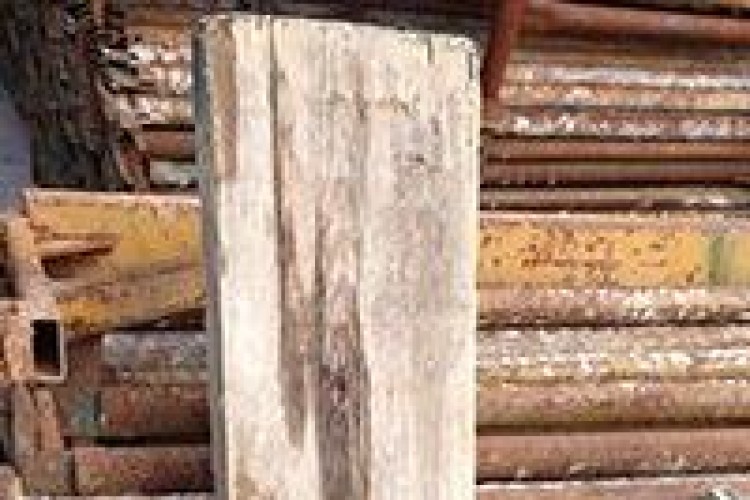An investigation by Northern Ireland’s Health & Safety Executive (HSENI) has found tha the majority of these injuries happen when boards used in platform brackets break during normal work activities.
HSENI has found during site visits that boards are commonly being used that look sound, but on closer inspection are found to have been weakened.
It is warning contractors top implement a formal inspection regime for their boards, to check them regularly for damage, rot or any other feature which may reduce their strength.
It is also warning against the misuse of scaffolds boards, such as matting to help vehicles over soft ground or ramps for wheel barrow access
Accidental damage can occur from driving vehicles over boards, throwing or dropping boards from heights, or from impact loads.

Common examples of unacceptable damage include:
- fungal decay, for example wet rot
- broken or damaged end bands
- wood broken from the edge of the boards which significantly reduces the cross-section of the board, for example, notches
- loose or broken knots
- excessive cuts in the faces of boards caused by hand saws, circular saws or angle grinders (trades likely to use power tools on scaffold must use sacrificial timber and not cut directly onto scaffold boards)
- transverse cracks caused by overloading.
- infestation of the timber, for example, holes caused by insects
In normal use, a board’s top face on one job may become its bottom face on the next job. Mechanical damage may occur on the first job but the failure may not happen until the board is turned and loaded in the opposite direction. The user causing the damage may not witness the failure and is unlikely to be aware of the consequences of their actions, HSENI is warning.
There is a British Standard specification for scaffold boards – BS 2482:2009. HSENI recommends that only boards manufactured to this standard are acceptable. Failure of a new board graded to this standard is unlikely when it is first used. Failures are much more likely to be due to misuse during construction work.
Damaged boards or boards without end bands should be destroyed. The end bands must be present at both ends of the scaffold board to protect the vulnerable end grain of the boards. They should extend around the edges of the board by at least 150mm for 38mm boards and at least 100mm for 63mm boards.
Fungal decay, usually wet rot, is common in poorly stored scaffold boards. It can be detected by discolouration of the wood, which also becomes softer –a screwdriver can be easily pushed into attacked wood. Rot often starts at cracks or around knots in wood because water is retained in these areas. The boards will often smell musty and will feel lighter than an equivalent sound board.
Got a story? Email news@theconstructionindex.co.uk



